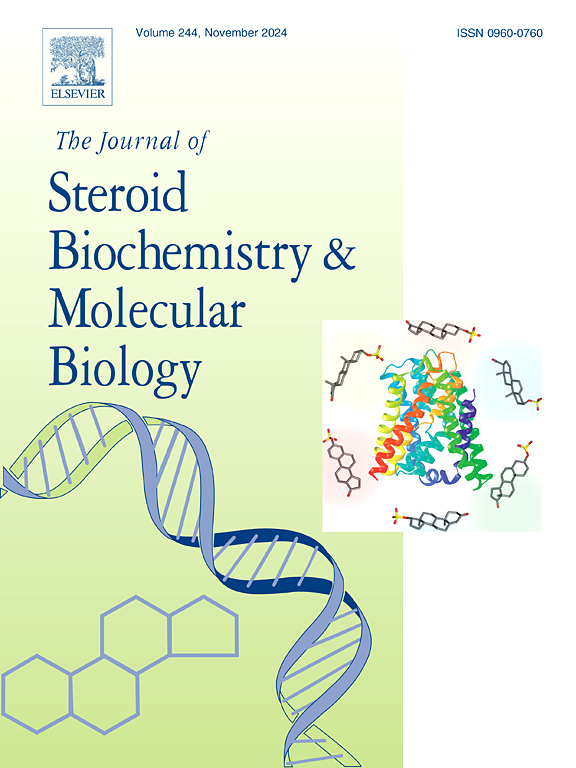25(OH)D参考区间的地理差异
IF 2.5
2区 生物学
Q3 BIOCHEMISTRY & MOLECULAR BIOLOGY
Journal of Steroid Biochemistry and Molecular Biology
Pub Date : 2025-05-27
DOI:10.1016/j.jsbmb.2025.106790
引用次数: 0
摘要
维生素D缺乏已成为世界范围内普遍存在的公共卫生问题。近年来,人们进行了大量的研究来确定25(OH)D的参考范围。目的是利用直接和间接方法确定东南安纳托利亚和黑海地区维生素D及其代谢相关参数的参考区间,包括PTH、Ca、P和ALP,这两个地区的地理位置和饮食习惯差异很大,对维生素D水平有很大影响。直接法参照范围根据CLSI EP28-A3指南采用非参数法计算。间接法采用数据过滤后确定参考范围,采用Bhattacharya法计算。直接法25(OH)D的参考区间为夏季8.03-29.44 ng/mL,东南部安纳托利亚地区冬季5.55-23.07 ng/mL,黑海地区夏季6.34-29.69 ng/mL,冬季6.28-27.34 ng/mL。在间接方法中,25(OH)D的参考区间在东南安纳托利亚地区为7.24-41.69 ng/mL,在黑海地区为6.17-42.66 ng/mL。在东南安纳托利亚地区,夏季和冬季参考人群中严重维生素D缺乏症的患病率分别为7.6% %和30.5% %,在黑海地区分别为24.1% %和22.1% %。这项研究表明,尽管由于社会、地区和季节的差异,实验室检测的参考范围有所不同,但25(OH)D的水平低于推荐的参考范围。本文章由计算机程序翻译,如有差异,请以英文原文为准。
Geographical differences in 25(OH)D reference intervals
Vitamin D deficiency has become a widespread public health problem worldwide. In recent years,numerous studies have been conducted to define the reference range for 25(OH)D.The aim was to determine the reference interval of Vitamin D and its metabolically related parameters, including PTH, Ca, P and ALP,using direct and indirect methods for the Southeastern Anatolia and Black Sea regions,which differ significantly in terms of geographical location and dietary habits that greatly influence Vitamin D levels. In the direct method, reference ranges were calculated using non-parametric methods according to CLSI EP28-A3 guidelines. In the indirect method, reference ranges were determined after data filtration and calculated using the Bhattacharya method. In the direct method, the reference interval for 25(OH)D were found to be 8.03–29.44 ng/mL in summer and 5.55–23.07 ng/mL in winter for the Southeastern Anatolia Region, and 6.34–29.69 ng/mL in summer and 6.28–27.34 ng/mL in winter for the Black Sea Region. In the indirect method, the reference interval for 25(OH)D were determined as 7.24–41.69 ng/mL in the Southeastern Anatolia Region and 6.17–42.66 ng/mL in the Black Sea Region. The prevalence of severe Vitamin D deficiency in the reference population during the summer and winter seasons was found to be 7.6 % and 30.5 %, respectively, in the Southeastern Anatolia Region, and 24.1 % and 22.1 %, respectively, in the Black Sea Region. This study has shown that despite variations in reference ranges for laboratory tests due to societal, regional, and seasonal differences, the levels of 25(OH)D were lower than the recommended reference ranges.
求助全文
通过发布文献求助,成功后即可免费获取论文全文。
去求助
来源期刊
CiteScore
8.60
自引率
2.40%
发文量
113
审稿时长
46 days
期刊介绍:
The Journal of Steroid Biochemistry and Molecular Biology is devoted to new experimental and theoretical developments in areas related to steroids including vitamin D, lipids and their metabolomics. The Journal publishes a variety of contributions, including original articles, general and focused reviews, and rapid communications (brief articles of particular interest and clear novelty). Selected cutting-edge topics will be addressed in Special Issues managed by Guest Editors. Special Issues will contain both commissioned reviews and original research papers to provide comprehensive coverage of specific topics, and all submissions will undergo rigorous peer-review prior to publication.

 求助内容:
求助内容: 应助结果提醒方式:
应助结果提醒方式:


